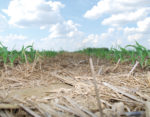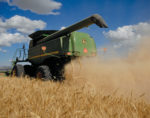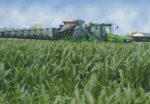Advertise Follow Us
Articles Tagged with ''Cover crops''
Costly Cover Crop Mistakes To Avoid
No-tillers must make careful decisions on what to seed, and when to seed, to succeed with cover crops, experts say.
Read More
No One Answer For Handling No-Till Residue
You’ll find significant differences in the way no-tillers handle crop residue depending what part of the country they live and farm.
Read More
Cooperation Benefits No-Tillers, Watershed
Indiana no-tillers and researchers are working to reduce nutrient runoff, boost subsurface drainage in a key environmental hotspot
Read More
What I've Learned from No-Tilling
No-Tilled To Save Time, But Quickly Saw Soil Benefits
Western North Dakota farmer integrates cattle, dryland corn and multiple cover-crop species to build a productive no-till system.
Read More
No-Tillers Finding New Ways To ‘Cover Up’
High-clearance seeding machines, injection with slurry highlight strategies popping up for cover-crop establishment.
Read More
Take a Step-By-Step Approach When Converting To No-Till
Cereal rye, vertical tillage and a deliberate, field approach helped Ohio no-tillers Jim and Susie Braddock convert their 2,400-acre farm to no-till
Read More
Fires Scorch No-Till Profits
A no-tiller’s investment in crop residue can go up in smoke during field fires, but some steps can be taken to soften the blow
Read More







.png?height=125&t=1731942302&width=150)




